Building of the Day: 13-23 Lexington Avenue
Brooklyn, one building at a time. Name: Former Pincus & Tobias Shoe Factory Address: 13-23 Lexington Avenue Cross Streets: Grand and Classon Avenues Neighborhood: Clinton Hill Year Built: 1911, rebuilt around 1922 Architectural Style: Early 20th century brick factory building Architect: Unknown Landmarked: No The story: Brooklyn was once home to a large and profitable…
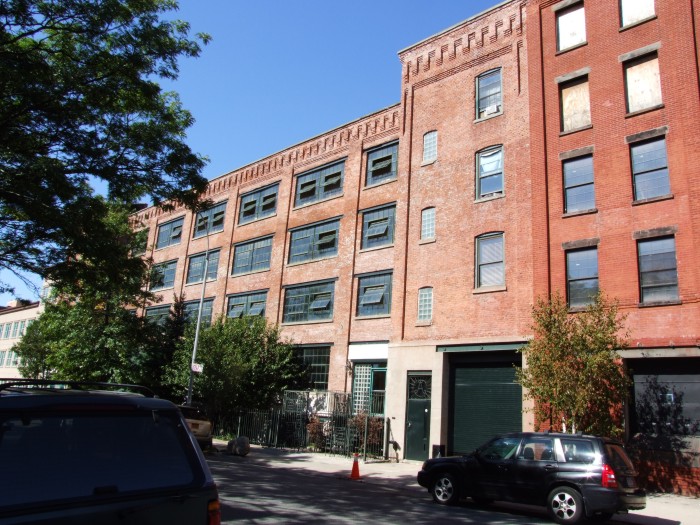

Brooklyn, one building at a time.
Name: Former Pincus & Tobias Shoe Factory
Address: 13-23 Lexington Avenue
Cross Streets: Grand and Classon Avenues
Neighborhood: Clinton Hill
Year Built: 1911, rebuilt around 1922
Architectural Style: Early 20th century brick factory building
Architect: Unknown
Landmarked: No
The story: Brooklyn was once home to a large and profitable shoe manufacturing industry. Yes, shoes were once made in Brooklyn; all kinds of shoes. We had factories that made shoes and boots for men, women and children. There were factories that made lower end products, mid-priced products and high end and fashionable shoes and boots. The companies were scattered all over the manufacturing ends of Brooklyn, but by the beginning of the 20th century, were mainly centered in the eastern Clinton Hill/Western Bedford/southern Wallabout corridor.
Back then, the Myrtle and Lexington Avenue el trains rumbled overhead, and frequent trolley service ran along the north/south avenues, making this area perfect for workers to commute to easily. Factory and other industrial buildings sprang up here, and for the most part, still stand. One of the largest shoe factories in the area was that of Pincus & Tobias Inc., the makers of fine women’s shoes and boots.
The company was headed by M.E. “Manny” Tobias and Julius Pincus. They brought the company to Brooklyn in 1911, moving from their Manhattan facilities into a newly built factory building here at 13-23 Lexington Avenue, between Classon and Grand Avenues. The building was still being finished when they signed their lease in November of 1911. Pincus & Tobias Shoes were advertised as some of the finest women’s footwear available. Their lines were carried by shoe stores across the country.
In 1921, the Brooklyn Shoe Manufacturer’s Board of Trade organization sponsored a trade show that highlighted the styles of Brooklyn-made shoes. Over twenty-five companies took part, including Pincus & Tobias. A large runway was constructed as part of the show, with a fashion show featuring only Brooklyn shoes. It was a very successful event, and highlighted the importance of the Brooklyn shoe manufacturers.
But in 1922, disaster occurred. On January 16, 1922, a massive five-alarm fire gutted the entire factory. Fortunately the fire happened at night, and no workers were in the plant at the time, and there was no loss of life. All of the stock was lost, as were tons of leather and other raw materials such as glues and fabrics, all of which were highly flammable. Some of the steel shoe making machinery was also destroyed.
The fire collapsed the roof and the front wall of the building. Firefighters were able to contain the fire somewhat so that rest of the building didn’t completely collapse, but it was a $500,000 wreck. Pincus and Tobias, who both lived in Manhattan, rushed to the scene of the blaze, only to stand there helplessly as their factory burned on. They were thankfully fully covered by insurance, and vowed to rebuild.
They told their customers that they would not be delivering their spring orders, but would be back in business for the placement of fall orders. Pincus & Tobias promised their workers they would only be out of work until a temporary factory could be found. They ended up renting a factory building on the other side of this same block, and went back to work. Manny Tobias told the “Boot and Shoe Recorder,” a shoe industry trade magazine, that they would rebuild on the same site, and had already started work. It was January; they expected the newly restored factory to be back in operation by July.
This present day building must be the new building. I don’t know if they merely copied the style of the old, or if this is a new design. It certainly looks older, rather than a 1920s factory building. Tobias told reporters that the new building would be more fire resistant, and would have other modern features. It would be interesting to see how this factory was constructed. A large expanse of big windows like this is more consistent with reinforced concrete construction, a 20th century practice, rather than Victorian era brick and mortar, in which large windows like that cannot be supported as well. Perhaps the brick is only a shell.
The factory went back to business up until at least the end of the 1940s. By 1948 New York City was still the largest manufacturer of shoes in the United States, seconded only by factories in Massachusetts. Twenty years later, it was just about all gone, shipped overseas to Brazil, Spain, Italy and other places. Today, it’s China. The latter part of the 20th century also saw the deconstruction of the el trains, making it much harder for any factory to be in this area.
According to records on line, the building belonged to the Bruce Industries between 1966 and 1984. I was not able to find out what they produced. They seem to have lost the building to the City in 1986, with a vacate order that year, and it was purchased by the present owners in 1988. It was converted into apartments, and has 11 units. They must be quite large. The building recently lost its coating of white stucco and paint. It looks much better now, and the brick decorative dentil shapes on the cornice are much more prominent.
(Photograph: S.Spellen)
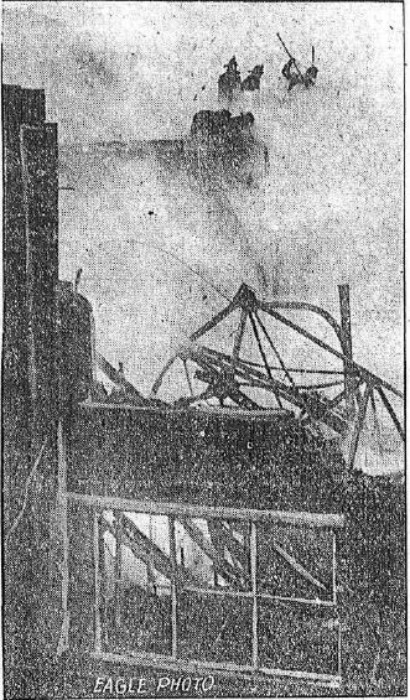
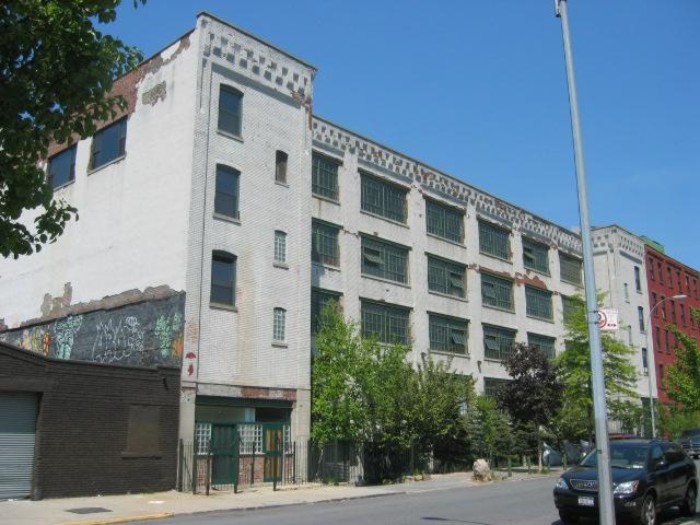
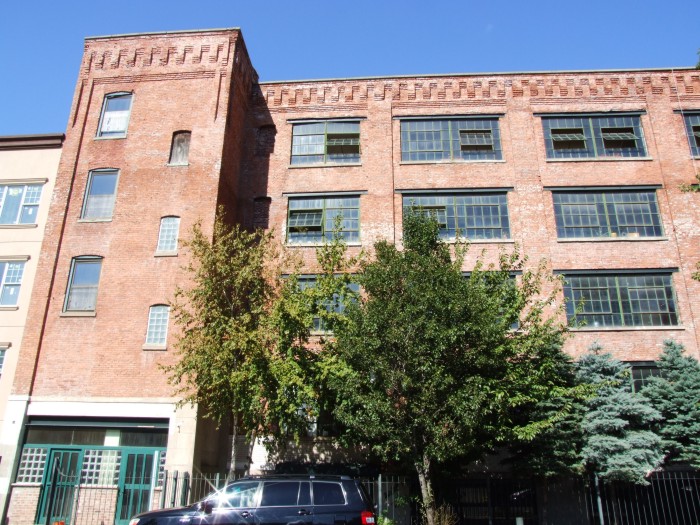
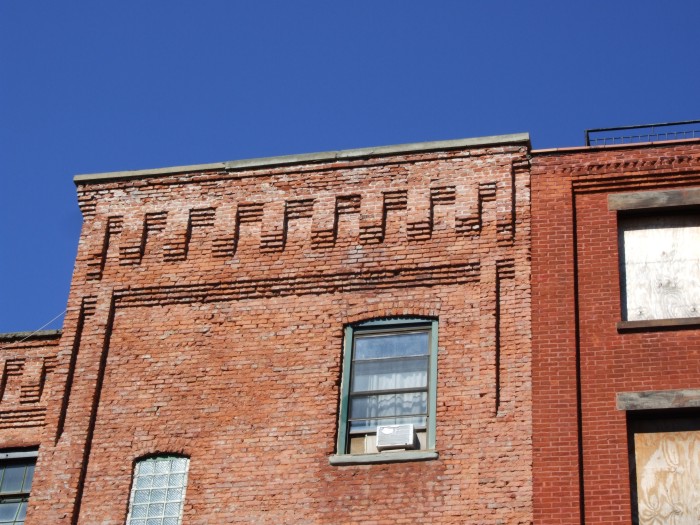
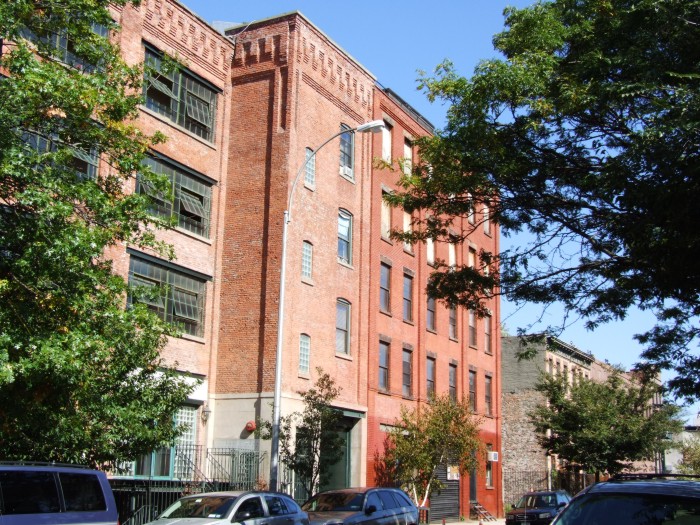





372 Dekalb is also a former shoe factory converted to coop apts in the late 1980’s. The EL station was right there. Grand Ave. used to run through there before the Mitchell-Lama high rises were built.